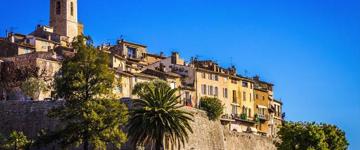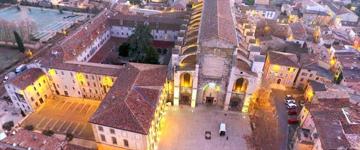Ripaille Castle
Built from the late fourteenth century, residence of the Counts of Savoy, the castle of Feast is located in the Chablais, a country that was attached to the eleventh century at the Savoy. Became the headquarters of the Order of St. Maurice, the residence welcomes religious communities until the Revolution. She is now a resident of approval.
Built from the mid-fourteenth century, originally a wooden pavilion on a stone base in the middle of a game reserve. It has been constantly revised and expanded, including the addition in the early fifteenth century of the hermitage of Feast, intended for housing the Duke of Savoy Amadeus VIII, and six of his companions, after his abdication, and Augustinian priory of Feast (1410).
It is often confused with the castle of Thonon, destroyed in the seventeenth century, and was from 1411 to the late fifteenth century one of the principal residences of the Savoy. The castle occupied roughly the area between Castle Sonnaz (1666) and the Saint-Bon (eleventh century).
Acquired in the late nineteenth century by Frederick Engel-Gros, Mulhouse, DMC boss textile mills, it was completely redone, the exterior style Renaissance, Art Nouveau interior. His son Andrew Engel on the field created the arboretum, planted in 1930, he was damaged by the 1999 storm.
Descendants, the Necker-Engel family finance minister of Louis XVI, still own a large portion of Feast. In 1976, Mrs. Harold Necker, government assistance, created the Foundation for Ripaille maintain and enhance this heritage.
Around the castle is a large vineyard of 22 hectares, producing a white wine very much appreciated, The Feasting and a forest of 53 hectares maintained jointly with the town of Thonon-les-Bains, which has one part.
The monument of the Righteous Among the Nations from France was inaugurated in the clearing of Feast of the President of the Republic, Jacques Chirac, November 2, 1997. Situated between the forest and arboretum, the Memorial commemorates the courage of the Righteous of 2740 French who saved Jews from certain death during World War II and urges the duty of memory.
According to some historians, and the legend, the phrase "make merry" finds its origin: the dukes of Savoy, one time owner of what was a great hunting area, had the habit of feasting. The legend is too good: the phrase "make merry" is attested in the texts several decades before the construction of the first flag. The name derives Ripaille addition of "Rispe", "brush" or "barrens". The link with the castle comes from the place itself that, before construction was a moor covered with scrub.


